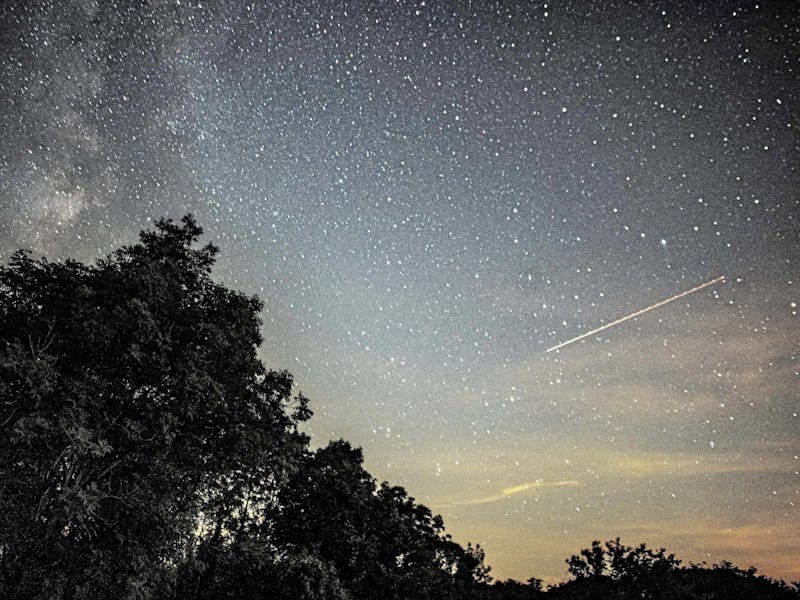One of the 10 Brightest Objects in the Sky is Now a Satellite — and More Are Coming
BlueWalker 3 is brighter than all but seven stars in the night sky, and it's just the first of a planned constellation of super-bright satellites.

One of the brightest objects in the night sky isn’t a star or a planet — it’s a communications satellite.
The BlueWalker 3 satellite, launched in September 2022, is now the eighth-brightest object in the sky, just behind blue supergiant star Rigel and ahead of nearby star Procyon. And it’s just a prototype for an entire constellation of similar broadband communications satellites called BlueBird, which satellite designer AST SpaceMobile hopes to launch sometime next year.
BlueWalker 3’s 692-square-foot array of solar panels reflects a lot of sunlight, which is what makes the satellite so bright. Astronomers around the world, led by University of Atacama astronomer Sangeetha Nandakumar, recently tracked the satellite to measure exactly how bright it is, and the results were alarming for anyone who’s at all invested in actually being able to see the stars. They published their results in the journal Nature.
Artificial Constellations Replacing Real Ones
The massive solar array that powers BlueWalker 3 reflects enough sunlight to outshine some of the brightest stars in the night sky, including nearby Procyon.
AST SpaceMobile plans to launch its first five BlueBird satellites early in 2024, with another 20 satellites blasting off later in the year. And if something in the satellites’ design doesn’t change drastically, that could mean another 25 objects brighter than all but seven stars in the night sky.
“The trend towards the launch of increasingly larger and brighter satellites continues to grow,” Nandakumar and colleagues write in their recent paper. Amazon plans to launch 3,200 broadband satellites in its Project Kuiper constellation sometime in the coming year. SpaceX’s StarLink constellation already has more than 5,000 satellites in low-Earth orbit, with plans to more than double that number eventually.
All those satellite constellations could pose a challenge for astronomers, making it very difficult to see space from the ground, argue Nandakumar and colleagues, even with some of the world’s most powerful telescopes. And that’s just visible light; radio signals and infrared emissions from all those satellites could also interfere with astronomy.
There are ways to make satellite constellations less bright; StarLink has experimented with painting dark coatings on some of its satellites, which makes them about half as bright as the un-coated version. Nandakumar and colleagues say it’s important to assess the possible impact of satellites on the night sky before launch as part of the Federal Aviation Administration’s process for deciding whether to approve a satellite launch.
Meanwhile, light pollution here on the ground is causing the night sky to get about 10 percent brighter every year. In another generation or two, according to a study published in January, people in most of the world may not be able to look up and see stars at all — just a glowing, blank sky.
This article was originally published on